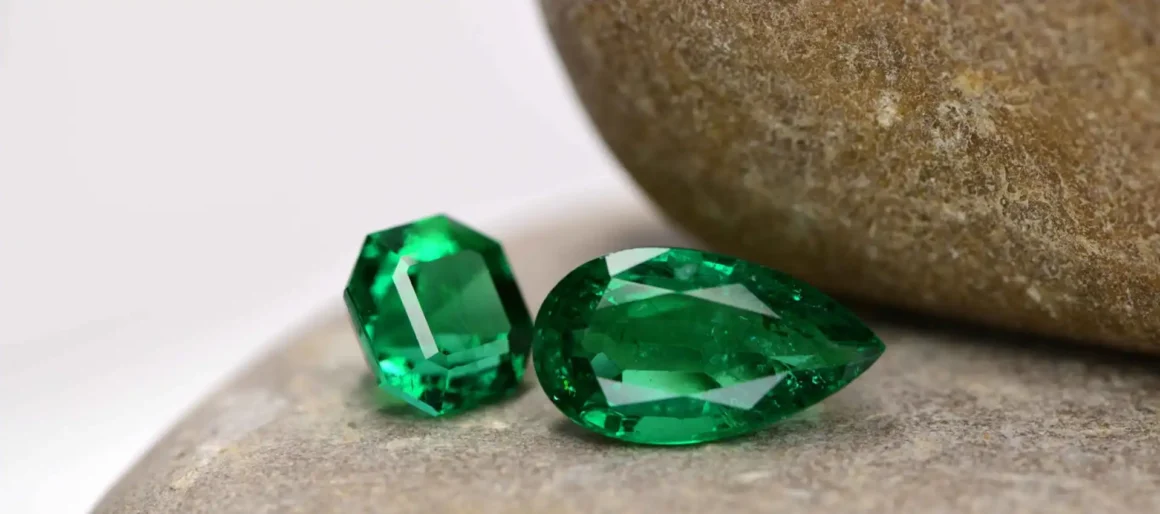The gemstone market has always been a cornerstone of the luxury jewelry world, but recent auction results have highlighted its growing significance as an investment asset. As collectors and investors increasingly turn to rare gemstones for both aesthetic pleasure and financial security, understanding the trends that influence their market performance is crucial. This article offers insights into the recent auction results and what they reveal about the current state and future potential of the gemstone market.

The Surge in Demand for Rare Gemstones
In recent years, we’ve seen a sharp rise in the demand for rare and high-quality gemstones. The allure of these natural treasures lies in their scarcity, beauty, and durability. From vivid blue sapphires to flawless white diamonds and richly colored rubies, these gemstones are prized for their uniqueness, making them highly sought after in the auction world.
At major auction houses like Christie’s and Sotheby’s, record-breaking sales have underscored this trend. For example, a 14.83-carat pink diamond sold for $26.6 million at Sotheby’s Geneva in 2023, reflecting the ongoing demand for exceptional stones. These types of high-profile sales not only captivate the media but also signal to collectors and investors that the gemstone market remains a robust and reliable investment option.

Factors Driving Gemstone Value at Auction
Several factors influence the value of gemstones at auction, and understanding these can help investors and collectors make informed decisions. These factors include:
- Color: Gemstones with deep, vivid colors are generally more valuable than lighter or paler counterparts. The intensity and saturation of the stone’s color can significantly impact its price, especially for colored gemstones like sapphires, emeralds, and rubies.
- Clarity: While inclusions are natural in gemstones, stones with higher clarity (fewer or no visible inclusions) tend to be more valuable. Buyers seek gems that exhibit a clean, transparent appearance, as these are rarer and more visually appealing.
- Carat Weight: Larger gemstones are rarer and therefore command higher prices. However, the value per carat can increase exponentially as the size of the gemstone grows, particularly for flawless diamonds and richly colored stones.
- Provenance: The history of a gemstone, especially if it has been owned by royalty or celebrities, can greatly enhance its value. Auction houses often highlight the provenance of certain stones to attract higher bids.
- Certification: Gemstones accompanied by certificates from reputable gemological institutes, such as the Gemological Institute of America (GIA), tend to fetch higher prices. Certification provides buyers with confidence regarding the stone’s authenticity, quality, and origin.
Auction Houses Leading the Market
Several major auction houses are setting the benchmark for gemstone sales, including Christie’s, Sotheby’s, and Phillips. These institutions regularly hold high-profile auctions that attract top-tier collectors and investors from around the world.
Christie’s Magnificent Jewels auctions, for example, are renowned for offering some of the most exquisite gemstones available. In 2023, a 102.39-carat flawless diamond fetched $15.7 million, emphasizing the sustained interest in top-tier gemstones. Similarly, Sotheby’s has become a leader in selling rare colored gemstones, with notable sales like the “Sunrise Ruby,” which sold for $30.3 million in 2015 and remains one of the most expensive colored gemstones ever sold.
These auctions serve as barometers for the gemstone market, providing key insights into what collectors are willing to pay for the finest and rarest stones. As more investors view gemstones as a viable investment vehicle, auction results continue to drive interest and competition in this high-stakes market.

Key Trends in the 2024 Gemstone Market
Looking ahead, several key trends are expected to shape the gemstone market in 2024:
- Sustainability and Ethical Sourcing: As consumers and investors become more concerned with ethical sourcing, gemstones that are responsibly mined and certified by ethical standards will likely see an increase in demand. Auction houses are expected to emphasize the provenance and sourcing of gemstones to meet this growing concern.
- Rising Demand for Colored Gemstones: While diamonds have historically dominated the gemstone market, colored gemstones like emeralds, rubies, and sapphires are experiencing a surge in popularity. Their rarity and vibrant colors make them appealing not only for their aesthetic value but also for their investment potential.
- Asian Market Growth: Collectors and investors from Asia, particularly China, have become major players in the global gemstone market. Their growing wealth and appetite for luxury goods are likely to continue driving demand for high-quality gemstones, pushing prices upward.
- Technological Advancements in Gemology: With advancements in gemological technology, buyers and investors can now access more detailed information about gemstones than ever before. This transparency is expected to further strengthen investor confidence in the gemstone market.
How to Leverage Auction Results for Investment Decisions
For investors looking to capitalize on the gemstone market, paying close attention to auction results is essential. These results provide valuable insights into current market trends, buyer preferences, and pricing benchmarks. Here’s how investors can use this information to make informed decisions:
- Monitor Record Sales: Record-breaking sales often signal growing demand for certain types of gemstones. Investors can use these sales as indicators of what types of stones are likely to appreciate in value over time.
- Understand Market Cycles: Gemstone prices can fluctuate based on economic conditions, availability, and market sentiment. By following auction results over time, investors can gain a better understanding of these cycles and plan their purchases accordingly.
- Diversify Your Portfolio: While diamonds remain a strong investment, diversifying into colored gemstones such as emeralds, rubies, and sapphires can provide additional opportunities for growth. Auction results often highlight the performance of these stones, offering insight into which gems are trending upward.
Conclusion
The gemstone market, buoyed by strong auction results and increasing demand for rare stones, is poised for continued growth in 2024. Collectors and investors alike are drawn to the stability and long-term appreciation potential that gemstones offer. As the market evolves, staying informed about auction trends, certification standards, and emerging markets will be key to making smart investment decisions. Whether you’re a seasoned investor or new to the world of gemstones, understanding the forces shaping the market can help you navigate this lucrative sector.





